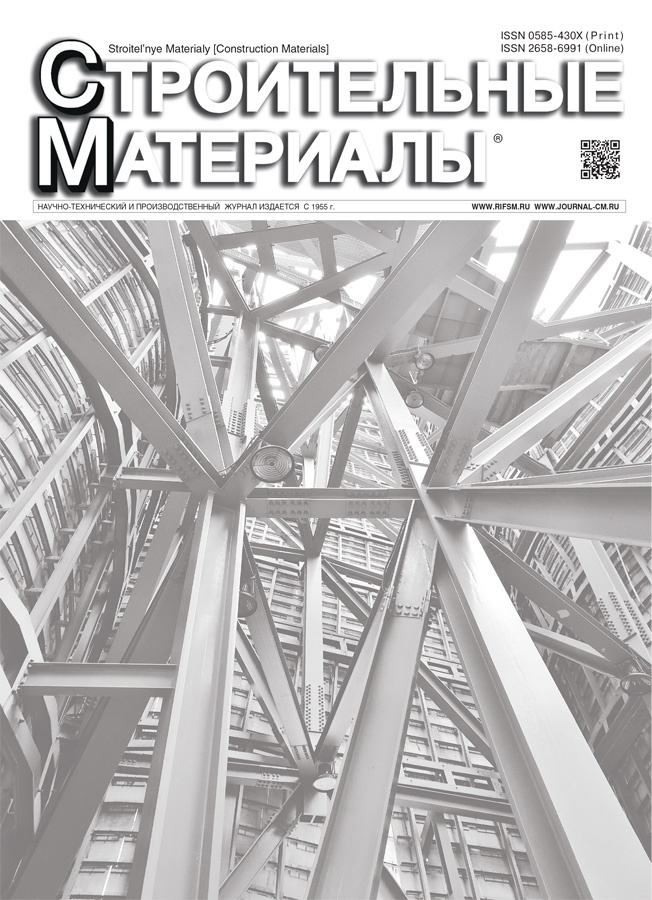Semi-dry pressing of bricks. Myths and prospects
- 作者: Storozhenko G.I.1, Shoeva Т.Е.1
-
隶属关系:
- Novosibirsk State University of Architecture and Civil Engineering (Sibstrin)
- 期: 编号 9 (2025)
- 页面: 27-30
- 栏目: Статьи
- URL: https://archivog.com/0585-430X/article/view/693101
- DOI: https://doi.org/10.31659/0585-430X-2025-839-9-27-30
- ID: 693101
如何引用文章
详细
Ceramic brick production continues to evolve, regardless of the forming method be it stiff, semi-dry, plastic, or traditional hand-molded” techniques. In the Russian Federation, despite the presence of specialized research institutions such as VNIIstrom, UralNIIstromproekt, NIIkeram, and others, many advancements have come from abroad in the form of fully automated, high-precision technological lines. While these imported systems are efficient and advanced, they are also costly. Their adoption has led to improved brick quality but also significantly increased production costs, resulting in reduced output and the closure of unprofitable factories. Meanwhile, our international counterparts continue their systematic research into new ceramic production methods and equipment-particularly focusing on innovative semi-dry pressing technologies. This article offers a concise overview of the key technological advancements in semi-dry pressed ceramic brick production, many of which were developed by Soviet and Russian scientists.
全文:
作者简介
G. Storozhenko
Novosibirsk State University of Architecture and Civil Engineering (Sibstrin)
编辑信件的主要联系方式.
Email: baskey_ltd@mail.ru
Doctor of Sciences (Engineering), Docent
俄罗斯联邦, 113, Leningradskaya Street, 630008, NovosibirskТ. Shoeva
Novosibirsk State University of Architecture and Civil Engineering (Sibstrin)
Email: shoeva_geotom@mail.ru
Candidate of Sciences (Engineering)
俄罗斯联邦, 113, Leningradskaya Street, 630008, Novosibirsk参考
- Shlegel’ I.F. Complex ShL-300 – third generation brick factory. Stroitel’nye Materialy [Construction Materials]. 2001. No. 2, pp. 8–9. (In Russian). EDN: IBEAGP
- Kondratenko V.A., Peshkov V.N., Slednev D.V. Modern technology and equipment for the production of semi-dry pressed ceramic bricks. Stroitel’nye Materialy [Construction Materials]. 2003. No. 2, pp. 18–20. (In Russian). EDN: IBEHNV
- Shlegel’ I.F. Problems of semi-dry brick pressing. Stroitel’nye Materialy [Construction Materials]. 2005. No. 2, pp. 18–19. (In Russian). EDN: JVOGTF
- Kotlyar V.D., Terekhina Yu.V., Nebezhko Yu.I. Prospects for the development of semi-dry pressed ceramic brick production. Stroitel’nye Materialy [Construction Materials]. 2011. No. 2, pp. 6–7. (In Russian). EDN: NQUACN
- Ashmarin G.D., Kurnosov V.V., Belyaev S.V., Lastochkin V.G. Justification of the effectiveness of compression molding of ceramic building materials. Stroitel’nye Materialy [Construction Materials]. 2011. No. 2, pp. 8–9. (In Russian). EDN: NQUACX
- Dry grinding is the starting point for the production of high-quality facade ceramics (Information). Stroitel’nye Materialy [Construction Materials]. 2018. No. 4, pp. 34–35. (In Russian). EDN: XMGZTV
- Patent RF 2629570. Ustanovka dlya drobleniya, selektivnogo pomola, sushki i separathiy polimineral’nykh promyshlennykh otkhodov [Plant for crushing, selective grinding, drying and separation of polymineral industrial waste]. Storozhenko G.I., Dvornikov N.A., Chivelev V.D. Declared 27.06.2016. Published 30.08.2017. Bul. No. 25. (In Russian).
- Rogovoy M.I. Tekhnologiya iskusstvennykh poristykh zapolniteley i keramiki [Technology of artificial porous fillers and ceramics]. Moscow: Stroyizdat. 1974. 320 p.
- Kondratenko V.A. Keramicheskie stenovye materialy: optimizaciya ih fiziko-tekhnicheskih svojstv i tekhnologicheskih parametrov proizvodstva [Ceramic wall materials: optimization of their physical and technical properties and technological production parameters]. Moscow: Kompozit. 2005. 512 p.
- Gur’eva V.A., Dubinethkiy V.V. Semi-dry pressed ceramic bricks based on a composition of alumosilicate raw materials and a mineral product of drilling waste. Stroitel’nye Materialy [Construction Materials]. 2023. No. 9, pp. 18–22. (In Russian). EDN: XFUTSN. https://doi.org/10.31659/0585-430X-2023-817-9-18-22
补充文件







